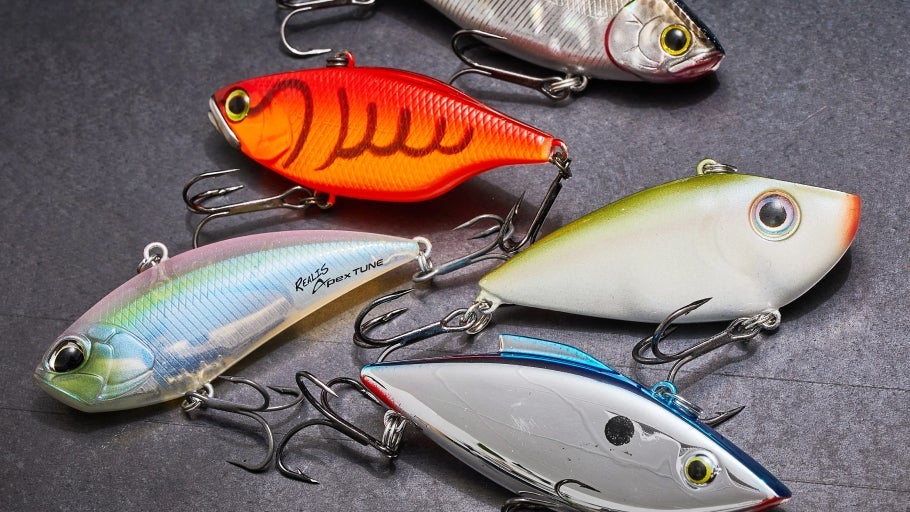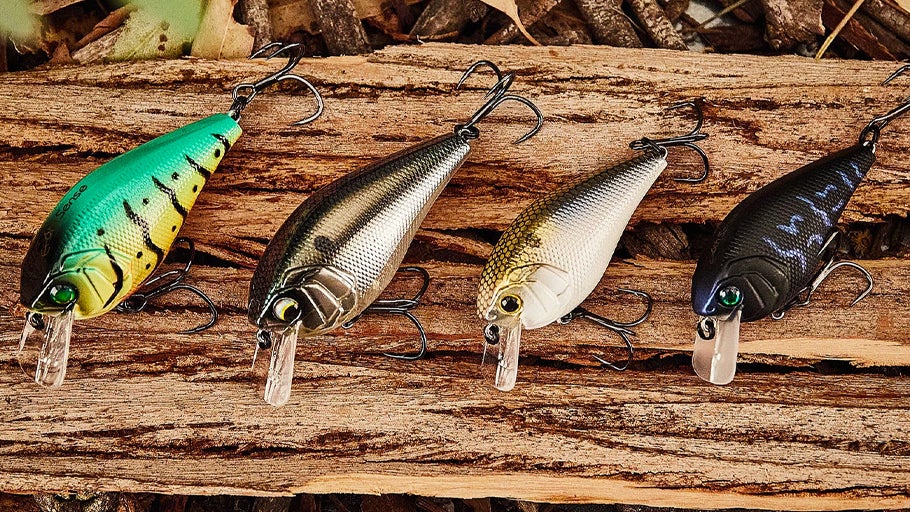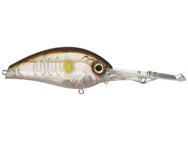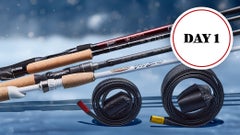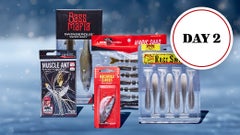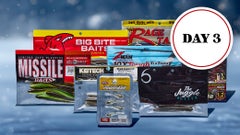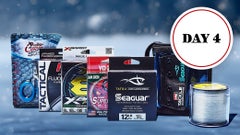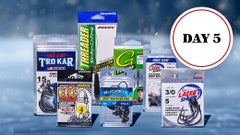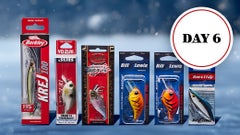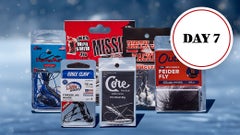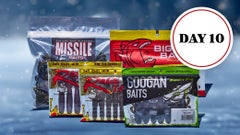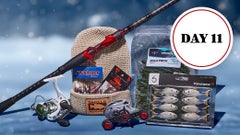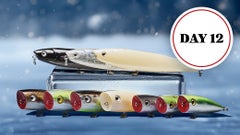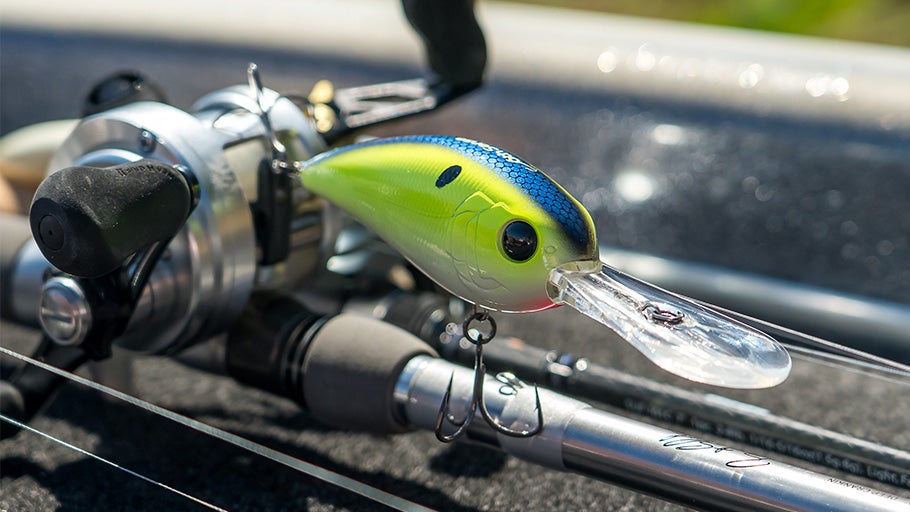
Deep-Diving Crankbaits Gear Guide
Introduction
When bass are holding on the bottom in deep water, your first thought might be to pick up a dropshot, football jig, shakey head, or similar offering. While there’s no doubt these methods are highly effective at scouring the depths when searching for largemouth, smallmouth, and spotted bass, a deep-diving crankbait can sometimes be a more efficient and effective option.
Popularized by professional angler David Fritts in the 1990s, deep-diving crankbaits allow you to rapidly cover water and pick off actively feeding bass while also triggering reaction strikes from fish that won’t respond to more subtle finesse presentations. Often large, heavy, and capable of reaching extreme depths of over 25 feet, deep-diving crankbaits are best fished with specialized gear. In this gear guide, we’ll go over the proper tackle and share some valuable insights for fishing these productive baits!
Deep-Diving Crankbaits Rods
Casting distance is absolutely essential for correctly fishing deep-diving crankbaits, so many anglers will choose a rod between 7’6” and 8’0” long. Not only does a long cast help you efficiently search vast areas, but it also gives the bait plenty of distance to dive and run along the bottom before the line’s angle becomes too steep for the bait to maintain bottom contact. A deep-diving crankbait may not even reach the bottom on a short cast, and if it does, it likely won’t spend much time in the prime strike zone before it starts swimming to the surface.
Long rods also typically have long rod butts, which is a welcome feature when casting and retrieving deep-diving crankbaits. The elongated handle allows for powerful two-handed casts and is also easy to tuck under your armpit during the retrieve, vastly reducing fatigue and improving comfort when fishing these high-torque baits.
Deep-diving crankbait rods can be graphite, fiberglass, or a combination of the two called composite. The right material for you mostly boils down to personal preference, as some anglers prefer the lighter weight, faster recovery, and increased sensitivity of graphite, while others put a premium on the softer, more delayed response of fiberglass. On the other hand, composite rods combine characteristics of both materials for a nice mix of feel and flex. Regardless of the chosen material, a good rod often has a moderate or moderate-fast action to absorb the crankbait’s impacts with the bottom, allow a bass to get hooked better, and keep the treble hooks from tearing out during battle.
Appropriate rods for deep cranking typically have lure ratings up to at least 1 ounce or more, as some hefty deep-diving cranks weigh over 2 ounces! A rod rated up to 1.5 ounces provides a good middle-of-the-road starting point for a variety of deep-diving crankbaits.
Deep-Diving Crankbaits Reels
Since long casting is so important when deep cranking, look for slightly larger reels that feature deeper spools with plenty of line capacity to handle the task. A 150- or 200-size baitcaster that holds over 100 yards of 12-pound line is a solid place to start your search.
Although it’s not mandatory, the power and torque of a lower gear ratio greatly helps you overcome the substantial resistance of deep-diving crankbaits. The very best reels for the job will have gear ratios in the 5 range, with reels in the 6 range being about the upper limit for optimal performance. Pair that low gear ratio with a frame or entire body made from rigid aluminum to reduce flex and ensure proper gear alignment, and you have an excellent reel for deep cranking.
Deep-Diving Crankbaits Line
Braid, nylon monofilament, fluorocarbon, and copolymer lines are all successfully used for deep cranking. Each type of line has its own pros and cons, but one of the most important aspects to consider across all of them is diameter. Simply put, a thinner line offers less water resistance so your crankbait can quickly reach the bottom. Similarly, a line that sinks also helps your bait get down and stay there.
With this in mind, fluorocarbon is a top choice because it sinks and has a diameter that’s typically slightly thinner than standard nylon monofilament. Braid is another excellent choice due to its extraordinarily narrow diameter that no nylon or fluorocarbon lines can touch. When choosing a monofilament, fluorocarbon, or copolymer line, 10- to 15-pound sizes work well depending on the weight and depth of a given crankbait. You can easily go heavier with a braided line since it’s so thin, with 10- to 30-pound lines forming a solid baseline.
Deep-Diving Crankbaits Modifications and Rigging
Compared to other baits, there isn’t a whole lot that can be done to modify a deep-diving crankbait. If your bait comes with hooks that aren’t too sharp or seem cheap, swapping the treble hooks is a pretty standard upgrade. You can also switch to a pair of red hooks or just a single red treble hook up front on the belly to suggest a bleeding or injured baitfish. Another option is to use a rear treble dressed in tinsel or feathers for added action.
Deep-Diving Crankbaits Tips and Tricks
It’s a smart idea to keep a hook file and a pair of needlenose pliers readily available when deep cranking. Fishing a deep-diving crankbait usually involves the lure constantly banging off rocks and wood, sometimes resulting in dull hook points or your bait getting out of tune. Deep cranks are also prone to snagging on the bottom, so a lure retriever is another critical accessory that can save you big bucks.
Getting your crankbait deep and keeping it there for as long as possible is vitally important. To help maintain bottom contact when deep cranking along a steep shoreline or offshore bottom contour, try making a long cast parallel or at a slight angle to the slope. Doing so keeps the bait running through a more consistent depth range for better bottom contact during much of the retrieve.
Using an old-school technique called “kneeling and reeling” also keeps your bait deeper for a longer time. After a cast is made, kneel down and stick the rod tip beneath the surface and keep it there until the crankbait loses bottom contact near the end of the retrieve. This helps reduce the line’s angle between the rod tip and crankbait to keep the bait running deep.
Varying the crankbait’s speed can often make bass react when a steady retrieve just isn’t getting results. Try speeding up and slowing down how fast you turn the reel handle, and you can even mix in some occasional pauses to let the crankbait briefly stop and float up during the retrieve.
Deep-Diving Crankbaits Colors
Color selection is largely dictated by the available forage, water clarity, and time of year. Deep-diving crankbaits are available in a huge range of finishes, but most anglers will be well-served by starting with a selection of simple core colors. As a general rule of thumb, try gravitating toward realistic colors with more translucency for clearer water, while solid and bold colors provide a stronger profile in more stained waters. Shad, perch, and natural craw finishes are some examples of productive colors in clearer water, while solid white, chartreuse, and brighter crawfish color schemes produce in more stained conditions.
Conclusion
Typically viewed as a crankbait that runs around 15 feet or more, a deep-diving crankbait is an extremely productive alternative to other presentations. When bass group up on offshore structure, whether in warm or cold water, deep-diving crankbaits can consistently trigger big bites and deliver heavy stringers. Adding deep cranking to your repertoire of bass-fishing techniques will surely help you become a more well-rounded and successful angler!
Crankbait Gear Guides

